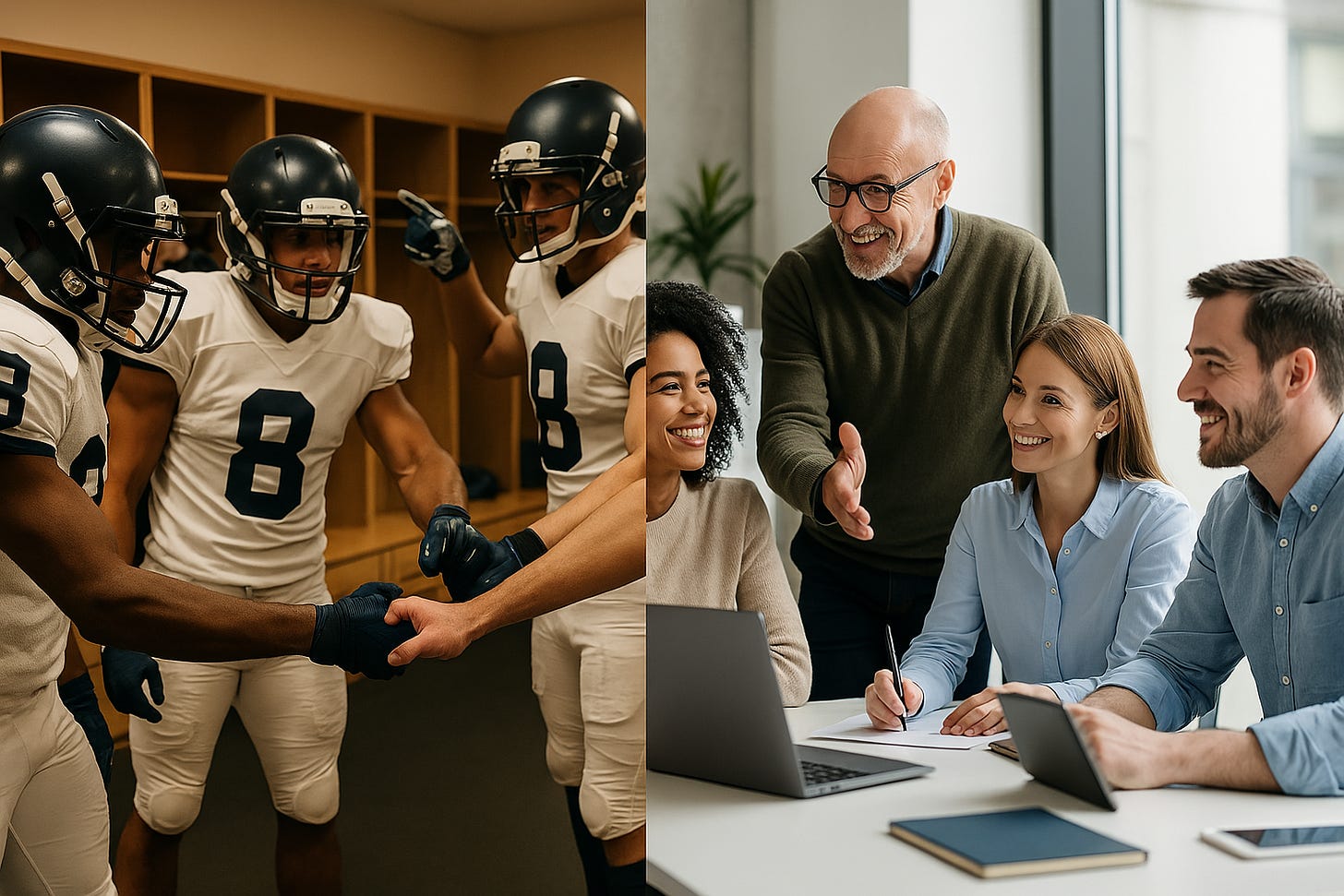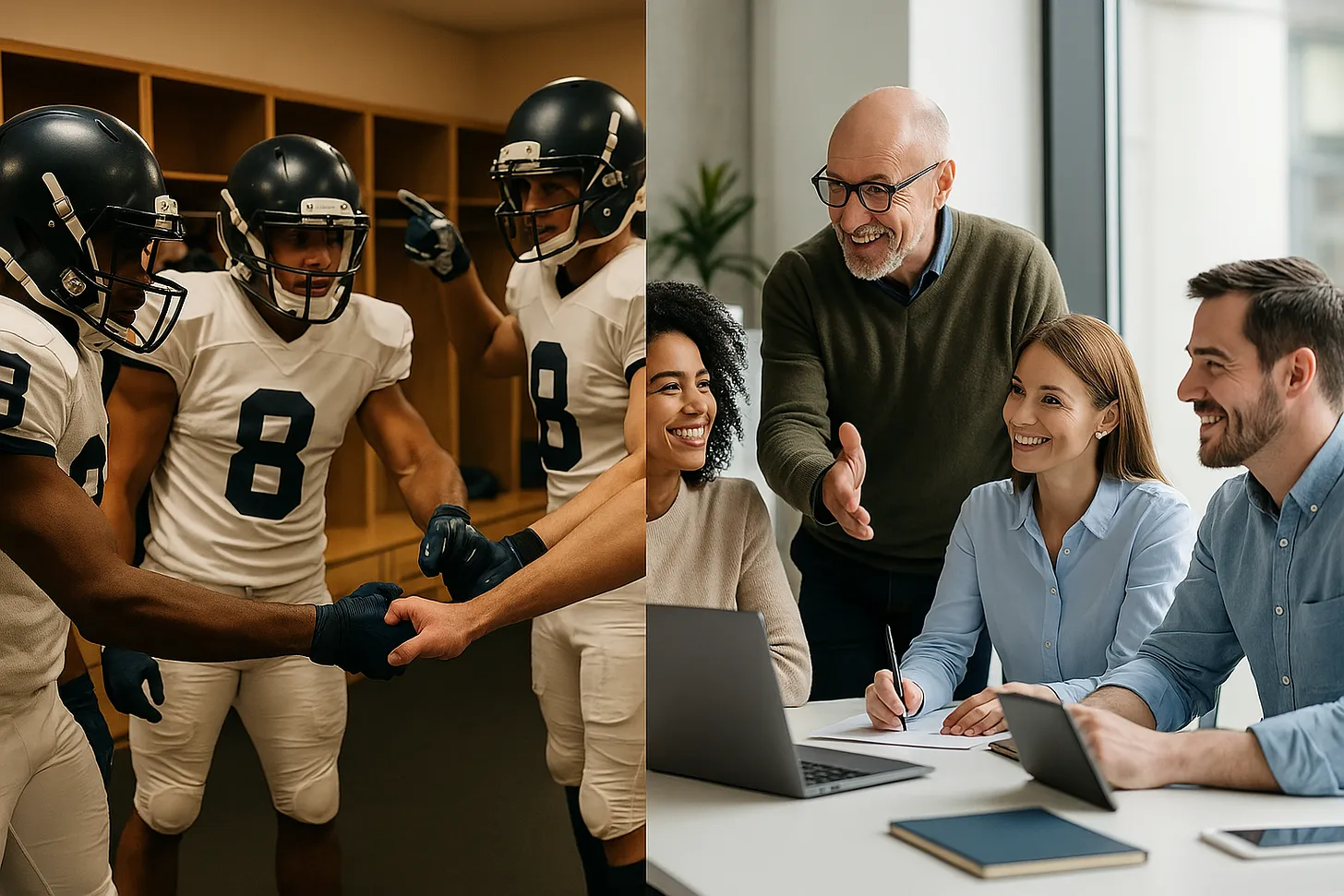This week, a Wall Street Journal article by Callum Borchers caught my attention. It focused on managing Gen Z in the workplace and featured Miami Dolphins quarterback Tua Tagovailoa and other sports leaders. The article suggests that the locker room is a helpful metaphor for understanding the values and expectations of today’s youngest workers.
We were supposed to continue our review of the What’s Next framework this week—and in a way, we still are. This article opened the door to something deeply connected to navigating what’s next: how we work across generations, cultures, and perspectives to serve something larger than ourselves.
Are We Managing People—or Grouping Them?
As an organizational psychologist, I’ve seen generations come and go in the workforce. While each group brings its strengths and quirks, we often fall into the trap of segmentation. We over-label Gen Z, Millennials, Gen X, and Boomers. Then, we assign behaviors and preferences as fixed traits instead of using them as starting points for learning and conversation.
The result?
An artificial competition over which generation is harder working, more loyal, or has the “right” values.
It’s tempting to compare. I’ve done it. In my 20s and 30s, I built a business seven days a week. There were no boundaries and, in many ways, no limits. That era shaped me—but it also exhausted me.
When I look at Gen Z’s insistence on balance, I don’t see laziness—I see evolution.
If I could have been successful working five days a week back then, I would have been more creative, healthier, and a better leader. That’s the wisdom of hindsight—something we can offer, not impose, on the next generation.
The Skills of What’s Next: Teaming Across Difference
Over the past few weeks, we’ve explored the What’s Next skills:
• Courage
• Self-understanding
• Acceptance of reality
This week, let’s add another:
Teaming across differences.
This skill requires humility. It means recognizing that your way isn’t the way—and that meaningful progress comes when diverse ideas and energies are harnessed toward a shared purpose. It’s what makes a locker room work—and what most workplaces struggle to create.
I emphasize this skill when I work with leadership teams, especially those navigating generational divides or aiming to strengthen collaboration. The ability to work together across differences is no longer optional; it’s essential.
What Gen Z Is Teaching Us (If We’re Willing to Listen)
The article highlights some key traits Gen Z brings to work:
• They want feedback—but only if it’s grounded in care.
• They value self-expression and a life outside of work.
• They’re mission-driven and ask tough questions from the start.
This can feel like a challenge for managers who are used to top-down authority and 24/7 hustle. But many of us wanted these things too—we didn’t have the language or cultural permission to ask.
Today’s young professionals are normalizing healthy boundaries, resisting workaholism, and asking for meaning, not as a perk but as a precondition.
From Sports to Work: The Power of Shared Goals
Here’s where I would have liked to see Borchers take the article: While personal well-being matters, the more significant takeaway from sports is that shared goals build strong teams.
Locker rooms don’t work because of hobbies and schedules—they work because everyone knows the mission. They trust each other. They win and lose together.
That’s the spirit we need in our organizations—not just empathy but alignment, not just purpose but shared purpose.
That’s why, when I consult with teams, one of the first questions I ask is:
“What is your organization’s mission—and how do you know everyone is aligned around it?”
It’s a simple question. And it often reveals a lot.
Whether you lead the Miami Dolphins, the Wall Street Journal, or Susie’s Coffee Shop, your job isn’t just to help individuals thrive—it’s to help the team succeed.

What’s Next for Us?
The workplace is changing. And the generational transition is part of that evolution.
But instead of lamenting what’s different, let’s ask:
• How can we use these differences to build something amazing?
• What if we created workplaces that reflect the best of every generation?
• Where ambition and boundaries aren’t in conflict?
• Where does mentorship go both ways?
• Where success is personal—but never just individual?
That’s the vision. That’s what’s next.
Your Turn:
Have you seen great examples of intergenerational teamwork? Or moments where it fell apart?
What helped—or hurt—the effort?
Drop a comment or reply—I’d love to hear your perspective.
And if your organization is navigating what’s next and looking for support, let’s talk.
